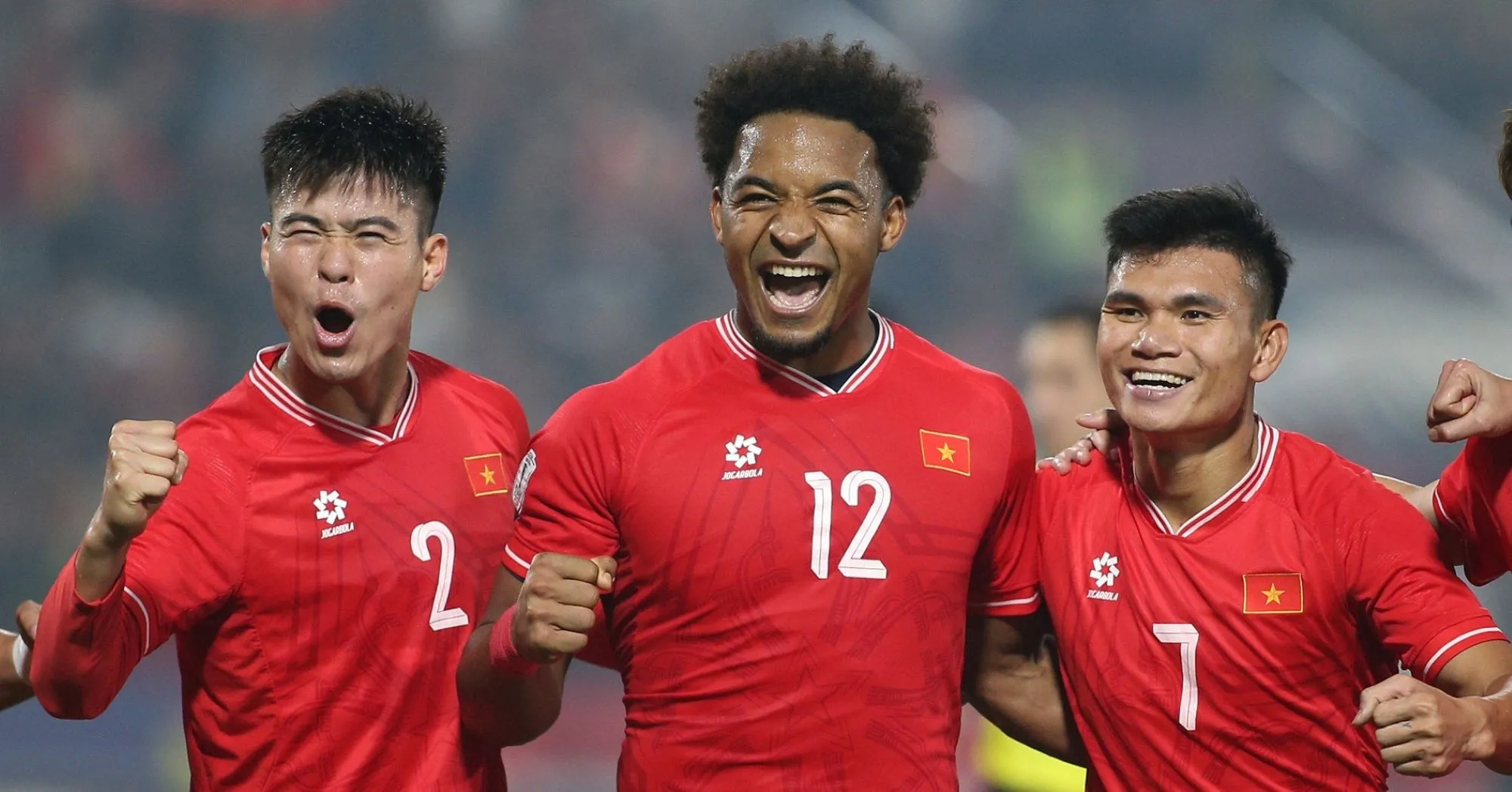- BETTING TIPS
- BETTING TIPS NAVIGATIONS
 Premier League
Premier League FA Cup
FA Cup League Cup
League Cup La Liga
La Liga Copa del Rey
Copa del Rey Super Cup
Super Cup Champions League
Champions League Europa League
Europa League Europa Conference League
Europa Conference League World Cup
World Cup Euro Championship
Euro Championship Nations League
Nations League Africa Cup of Nations
Africa Cup of Nations Copa America
Copa America International Friendly
International Friendly Confederations Cup
Confederations Cup Serie A
Serie A Coppa Italia
Coppa Italia Super Cup
Super Cup Bundesliga
Bundesliga Ligue 1
Ligue 1 DFB Pokal
DFB Pokal Super Cup
Super Cup Malaysia Super League
Malaysia Super League Coupe de France
Coupe de France Trophée des Champions
Trophée des Champions Pro League
Pro League
- Teams
- TEAMS NAVIGATIONS
 Premier League
Premier League FA Cup
FA Cup League Cup
League Cup La Liga
La Liga Copa del Rey
Copa del Rey Super Cup
Super Cup Champions League
Champions League Europa League
Europa League Europa Conference League
Europa Conference League World Cup
World Cup Euro Championship
Euro Championship Nations League
Nations League Africa Cup of Nations
Africa Cup of Nations Copa America
Copa America International Friendly
International Friendly Confederations Cup
Confederations Cup Serie A
Serie A Coppa Italia
Coppa Italia Super Cup
Super Cup Bundesliga
Bundesliga Ligue 1
Ligue 1 DFB Pokal
DFB Pokal Super Cup
Super Cup Malaysia Super League
Malaysia Super League Coupe de France
Coupe de France Trophée des Champions
Trophée des Champions Pro League
Pro League
- Fixtures & Results
- Fixtures & Results NAVIGATIONS
 Premier League
Premier League FA Cup
FA Cup League Cup
League Cup La Liga
La Liga Copa del Rey
Copa del Rey Super Cup
Super Cup Champions League
Champions League Europa League
Europa League Europa Conference League
Europa Conference League World Cup
World Cup Euro Championship
Euro Championship Nations League
Nations League Africa Cup of Nations
Africa Cup of Nations Copa America
Copa America International Friendly
International Friendly Confederations Cup
Confederations Cup Serie A
Serie A Coppa Italia
Coppa Italia Super Cup
Super Cup Bundesliga
Bundesliga Ligue 1
Ligue 1 DFB Pokal
DFB Pokal Super Cup
Super Cup Malaysia Super League
Malaysia Super League Coupe de France
Coupe de France Trophée des Champions
Trophée des Champions Pro League
Pro League
- Tables
- Tables NAVIGATIONS
 Premier League
Premier League FA Cup
FA Cup League Cup
League Cup La Liga
La Liga Copa del Rey
Copa del Rey Super Cup
Super Cup Champions League
Champions League Europa League
Europa League Europa Conference League
Europa Conference League World Cup
World Cup Euro Championship
Euro Championship Nations League
Nations League Africa Cup of Nations
Africa Cup of Nations Copa America
Copa America International Friendly
International Friendly Confederations Cup
Confederations Cup Serie A
Serie A Coppa Italia
Coppa Italia Super Cup
Super Cup Bundesliga
Bundesliga Ligue 1
Ligue 1 DFB Pokal
DFB Pokal Super Cup
Super Cup Malaysia Super League
Malaysia Super League Coupe de France
Coupe de France Trophée des Champions
Trophée des Champions Pro League
Pro League
- News
- News NAVIGATIONS
 Premier League
Premier League FA Cup
FA Cup League Cup
League Cup La Liga
La Liga Copa del Rey
Copa del Rey Super Cup
Super Cup Champions League
Champions League Europa League
Europa League Europa Conference League
Europa Conference League World Cup
World Cup Euro Championship
Euro Championship Nations League
Nations League Africa Cup of Nations
Africa Cup of Nations Copa America
Copa America International Friendly
International Friendly Confederations Cup
Confederations Cup Serie A
Serie A Coppa Italia
Coppa Italia Super Cup
Super Cup Bundesliga
Bundesliga Ligue 1
Ligue 1 DFB Pokal
DFB Pokal Super Cup
Super Cup Malaysia Super League
Malaysia Super League Coupe de France
Coupe de France Trophée des Champions
Trophée des Champions Pro League
Pro League
- Live ScoresLive
Vietnam Trials Against Team Full of Naturalized Players, Wants to Follow in the Footsteps of the Indonesian National Team?

Vietnam’s national team recently played a high-profile international friendly against a team filled with naturalized players, sparking speculation that they may be considering a similar approach to strengthen their squad. The match was seen as more than just a friendly; it was a test for Vietnam to assess how they fare against teams that benefit from experienced foreign-born talents. With Indonesia having successfully implemented a naturalization strategy in recent years, many are wondering if Vietnam is set to follow suit.
The game itself was an intense and competitive affair, with Vietnam looking to assert their dominance early on. Playing in front of their home crowd, the Vietnamese squad showed great energy and pressing football, attempting to break down their opponents with quick passing and high tempo. However, the physicality and technical quality of the naturalized players provided a unique challenge for the hosts.
The first half saw Vietnam struggle to break through their opponent’s defensive structure. The visiting team, strengthened by players with European and South American backgrounds, displayed strong tactical discipline and composure on the ball. Despite Vietnam’s best efforts, they conceded a goal just before halftime, highlighting the impact that naturalized players can bring to a team in terms of experience and quality.
Vietnam responded well in the second half, making tactical adjustments and increasing their attacking intensity. Their persistence paid off when they finally broke through with an equalizer, much to the delight of the home fans. The match ended in a hard-fought draw, but the real takeaway was the valuable experience gained from facing a team built around naturalized talent.
The decision to play against such an opponent suggests that Vietnam’s football federation is exploring different ways to elevate the national team’s competitiveness. In recent years, Indonesia has embraced naturalization, successfully integrating foreign-born players of Indonesian descent and strengthening their squad significantly. This approach has helped Indonesia compete at a higher level in regional and continental tournaments.
Vietnam’s football philosophy has traditionally focused on youth development and homegrown talent. However, with the increasing success of naturalized players in neighboring Southeast Asian teams, particularly in Indonesia, there is growing debate among Vietnamese football experts about whether a similar strategy should be adopted. While some purists argue that national identity should not be compromised, others believe that a balanced approach—combining local talent with key naturalized players—could be the key to success.
Looking ahead, Vietnam will need to assess whether they can achieve their goals solely through local development or if they should consider adding experienced foreign-born players to bolster their squad. The football landscape in Asia is evolving, and teams that adapt strategically tend to gain a competitive edge.
This friendly match served as a learning experience for Vietnam, exposing the team to a different level of physicality and tactical play. If they are serious about competing with the best in Asia, they may need to consider all available options, including the possibility of integrating naturalized players.
For now, Vietnam remains committed to its current footballing philosophy, but this match may have planted the seed for future discussions. Whether they follow Indonesia’s lead remains to be seen, but one thing is certain—Southeast Asian football is becoming increasingly competitive, and teams must continuously evolve to stay ahead.


